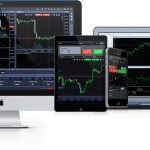
Introduction :
Stock market is not as easy as it looks. Good thing is that, technical analysis can help you understand market movements. One of the most important technical analysis tools is the use of moving averages. Moving averages are trend following indicators that show the average price of a security over a period of time. Moving averages can help traders identify market trends and determine when to buy and sell investments. With a little practice and knowledge, mastering technical analysis using moving averages can help you become a successful trader.
Join Offline Technical Analysis Courses
Understanding Technical Analysis:
Technical analysis is a art or science of analyzing securities and predicting future market movements based on historical price and volume data. Its main purpose is to identify price patterns and market trends which helps you to make informed trading decisions with confidence. By analyzing charts and indicators, traders try to find opportunities to buy and sell securities at favorable price zone. To understand technical analysis, it is important to know that it is based on the belief that past price movements can provide insight into future prices. This approach differs from fundamental analysis, which focuses on analyzing the financial situation of the company and other qualitative factors. As you know technical analysis uses past price and volume data so it can be used or applied to a variety of asset classes, including stocks, bonds, commodities and currencies. It is widely used by traders and investors at all levels. In the following sections, we will understand the role of moving averages in technical analysis, the different types of moving averages and how they are used. How to calculate moving averages and determine trends, moving average trading strategies and common key mistakes. I am sure, you will have a solid understanding of moving averages at the end of this tutorial and you will know how to effectively use moving averages to make trading decisions in the stock market. So let’s start!
The Role of Moving Averages in Technical Analysis:
Moving averages is an important aspect or tool in technical analysis, It provides traders a valuable information about ongoing market trends and trader can identify potential buying or selling opportunities. A average price of a stock or security or asset is calculated for a specific time frame. With the help of Moving averages fluctuation in daily price is smooth out and the ongoing trend is identified. They act as dynamic support and resistance levels, reflecting the average price at which investors are willing to buy or sell. It is used to determine whether the market is moving up, down or sideways and traders adjust their strategies accordingly. Moving averages help traders to identify potential entry and exit points for trades and hence prevent or minimizes the loss. When the price of a security crosses a moving average, it can indicate an uptrend and a buying opportunity. Conversely, if the price falls below the moving average, it may indicate a downward trend and selling. With the help of moving average price strength and duration of the ongoing trend can be calculated. Convergence or divergence of several moving averages can indicate a possible trend reversal or continuation of the trend. Overall, it’s a versatile tool in the technical analysis which guide traders to navigate the stock market and make informed decisions to maximize the profit. Understanding and interpreting their role is critical to become a successful trader.
Types of Moving Averages and Their Uses:
Moving averages come in different forms, each with their own unique characteristics and uses in technical analysis. The most commonly used types are Simple Moving Average (SMA), Exponential Moving Average (EMA) and Weighted Moving Average (WMA). SMA is the simplest moving average, which is calculated by adding the prices of a security for a given period and dividing it by the number of periods. This gives a flat line that reflects the general trend of the market. Investors often use SMAs to identify long-term trends and support and resistance levels. EMA puts more weight on recent prices, making it more responsive to recent market developments. The WMA assigns weights to each price based on whether it is close to the current cycle, thus increasing the importance of recent prices. This type of moving average is often used in volatility indicators and adaptive trading systems. Each type of moving average has its own advantages and limitations, and their use depends on the goals and trading style of the trader. Although it is advisable to experiment and find the moving averages that works best for you.
Calculating Moving Averages and Determining Trends:
Calculating a moving average is relatively simple. First, select the time period you want to analyze. This can vary from days to months depending on your trading strategy. Then add up the closing prices of the security for the selected period and divide it by the number of periods. This will give you a moving average value. To determine trends using moving averages, you need to compare the current price of a security with its moving average. If the price is consistently above the moving average, it indicates an uptrend. On the other hand, if the price is consistently below the moving average, it indicates a downward trend. If the price goes above or below the moving average, it can be a signal of a trend reversal or continuation. Remember that moving averages are only one technical analysis tool and work best in conjunction with other indicators and analysis methods. So, don’t rely solely on moving averages to make trading decisions. Use moving averages as part of a strategy to improve your chances of success in the trading.
Trading Strategies with Moving Averages:
Moving average trading strategies can be a powerful tool in your technical analysis arsenal. One popular strategy is the moving average crossover which involves two moving averages of different time frames . If the shorter-term moving average crosses the longer-term moving average, it can signal a buy signal. On the other hand, if the shorter-term moving average crosses the long-term moving average, it may indicate a sell signal. Another strategy is to use moving averages as support and resistance levels. When the price of a security approaches a moving average, it can bounce off the average, creating a support or resistance level. Traders can use these levels to enter or exit trades. Investors need to combine moving averages with other technical indicators such as MACD or RSI as dual or triple confirmation to amplify signals and improve their accuracy. This will filter out false signals and give a more accurate and effective trading strategy. Remember that no trading strategy is foolproof and it is important to manage your risks and use proper money management techniques. It’s also important to test your strategies by paper trading before taking actual trades and constantly improve and adapt them as market conditions change. With continuous practice and patience, moving average trading strategies can help to increase your chances of success in the stock market.
Avoiding Common Mistakes in Using Moving Averages:
When it comes to using moving averages in technical analysis, there are some common mistakes that traders often make. One common mistake is to rely only on moving averages without considering other factors. Moving averages are just one technical analysis tool and work best in conjunction with other indicators and analysis methods. Therefore, be sure to use them as part of a strategy. Another mistake is using moving averages on short time frames. Although shorter-term moving averages can capture rapid price movements, they can also be more prone to false signals. It is important to choose a time frame that suits your trading goals and style. Additionally, many traders fall into the trap of not testing their strategies and adapting them to changing market conditions. Remember that no strategy, no technical analysis tool is foolproof, and it’s important to constantly modify and adapt your approach. By avoiding these common mistakes and constantly learning and improving your knowledge, you can preciously use moving averages to master the stock market and make better trading decisions and to increase winning trades.
If you found our guide “Moving Averages” helpful, don’t forget to post comment! For more information please visit our websites www.chartedge.co.in. Must know websites for Indian stock market www.nseindia.com and www.bseindia.com
Join Offline Technical Analysis Courses
- 10 Powerful Futures and Options Trading Strategies for Beginners

- Expose the Power of Option Trading in technical analysis

- Understanding Bollinger Bands in Technical Analysis

- Understanding Moving Averages Convergence and Divergence (MACD) for Intraday Traders

- Why a stock trading course is worth considering?


